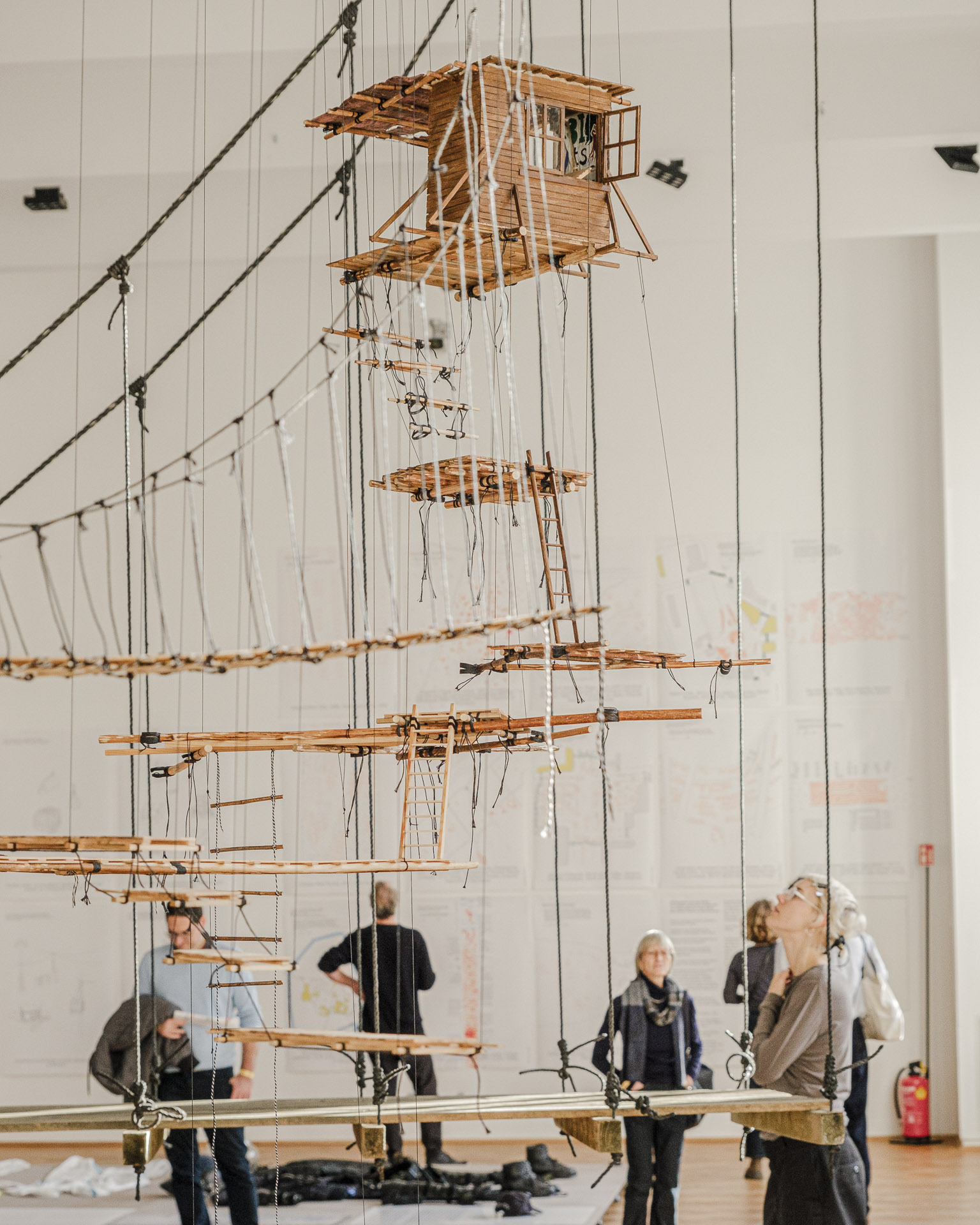
Protest architecture: timber pallets, climbing ropes and a bottle of glitter
Read in tandem, a new book and exhibition highlight ‘protest architecture’s’ aesthetic triumphs and practical nous, but its record as a political tool must be considered
Words and pictures for The Architectural Review
In December 2022, protesters in the German village of Lützerath were running out of time and materials. In an attempt to save the village from the expansion of an open-cast lignite mine, the Lützi Bleibt (Lützi Stays) protesters were adapting techniques from their earlier occupations at other mines to a more exposed setting. In the muddy farmyard of Lützerath’s last remaining permanent resident, they had built a network of monopods, tripods, ziplines and stilted huts to hold off expected police advances. A key objective was to lift as many protesters as possible 2.5m or more above the ground. That way, the protesters knew, only specially trained taskforces would be permitted to take their structures down, frustrating the expected eviction. Communicating via Telegram Messenger, a ‘Lützerath wish list’ was broadcast to a network of supporters, who collected wi-fi routers, battery banks, screws, wellington boots, timber pallets, thick socks, climbing ropes, LED lights and carabiners: the material palette of a rebel group readying to hunker down. They also needed a spirit level, hosepipe, hand saw, axe, hammock, ladder, bicycle and tent – plus one bottle of glitter.
In PROTEST/ARCHITECTURE: Barricades, Camps, Superglue, an exhibition on display at the Vienna Museum of Applied Arts (MAK), these materials are laid out near the entrance on a green tarpaulin, ‘a toolbox for creating and maintaining protest architecture’, in the words of the curators. A similarly intense spirit and architectural ingenuity imbues the exhibition’s drawings, photographs, booklets and films, which together depict 13 case studies of protest movements around the world …

In December 2022, protesters in the German village of Lützerath were running out of time and materials. In an attempt to save the village from the expansion of an open-cast lignite mine, the Lützi Bleibt (Lützi Stays) protesters were adapting techniques from their earlier occupations at other mines to a more exposed setting. In the muddy farmyard of Lützerath’s last remaining permanent resident, they had built a network of monopods, tripods, ziplines and stilted huts to hold off expected police advances. A key objective was to lift as many protesters as possible 2.5m or more above the ground. That way, the protesters knew, only specially trained taskforces would be permitted to take their structures down, frustrating the expected eviction. Communicating via Telegram Messenger, a ‘Lützerath wish list’ was broadcast to a network of supporters, who collected wi-fi routers, battery banks, screws, wellington boots, timber pallets, thick socks, climbing ropes, LED lights and carabiners: the material palette of a rebel group readying to hunker down. They also needed a spirit level, hosepipe, hand saw, axe, hammock, ladder, bicycle and tent – plus one bottle of glitter.
In PROTEST/ARCHITECTURE: Barricades, Camps, Superglue, an exhibition on display at the Vienna Museum of Applied Arts (MAK), these materials are laid out near the entrance on a green tarpaulin, ‘a toolbox for creating and maintaining protest architecture’, in the words of the curators. A similarly intense spirit and architectural ingenuity imbues the exhibition’s drawings, photographs, booklets and films, which together depict 13 case studies of protest movements around the world …